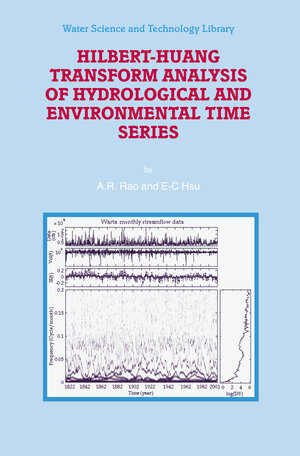
„ I believe Hilbert-Huang Transform Analysis of Hydrological and Environmental Time Series will satisfy researchers in any discipline who analyze nonstationary and/or nonlinear time series. The book does not claim to be a final word on the merits of the HHT, but it does extend empirical claims regarding the potential effectiveness of the HHT. There are no exercises, although the book could be used in a teaching setting.
Overall, I was glad to read the book and believe the HHT is well worth continued study as a potentially effective tool in the challenging area of nonstationary and non-linear time series analysis.“
Tom Burr, Statistical Sciences, Los Alamos National Laboratory, Los Alamos, NM, USA
Hilbert-Huang Transform Analysis of Hydrological and Environmental Time Series
von A.R. Rao und E.-C. HsuTo accommodate the inherent non-linearity and non-stationarity of many natural time series, empirical mode decomposition (EMD) and Hilbert-Huang transform (HHT) provide an adaptive and efficient method. The HHT is based on the local characteristic time scale of the data. The HHT method provides not only a precise definition in time-frequency representation than the other conventional signal processing methods, but also more physically meaningful interpretation of the underlying dynamic processes. The EMD also works as a filter to extract the variability of signals with different scales and is applicable to non-linear and n- stationary processes. This promising algorithm has been applied in many fields since it was developed, but it has not been applied to hydrological and climatic time series. The discussion in this book starts with several simulated data sets in order to investigate the capability of this method and to compare it to other conventional frequency-domain analysis methods that assume stationarity. Rainfall, streamflow, temperature, wind speed time series and lake temperature data are investigated in this study. The aim of the work is to investigate periodicity, long term oscillations and trends embedded in these data by using HHT. The analysis is performed in both the time and frequency domains. The results from HHT are compared to those from the multi-taper method (MTM) which is based on Fourier Transform of the data.






